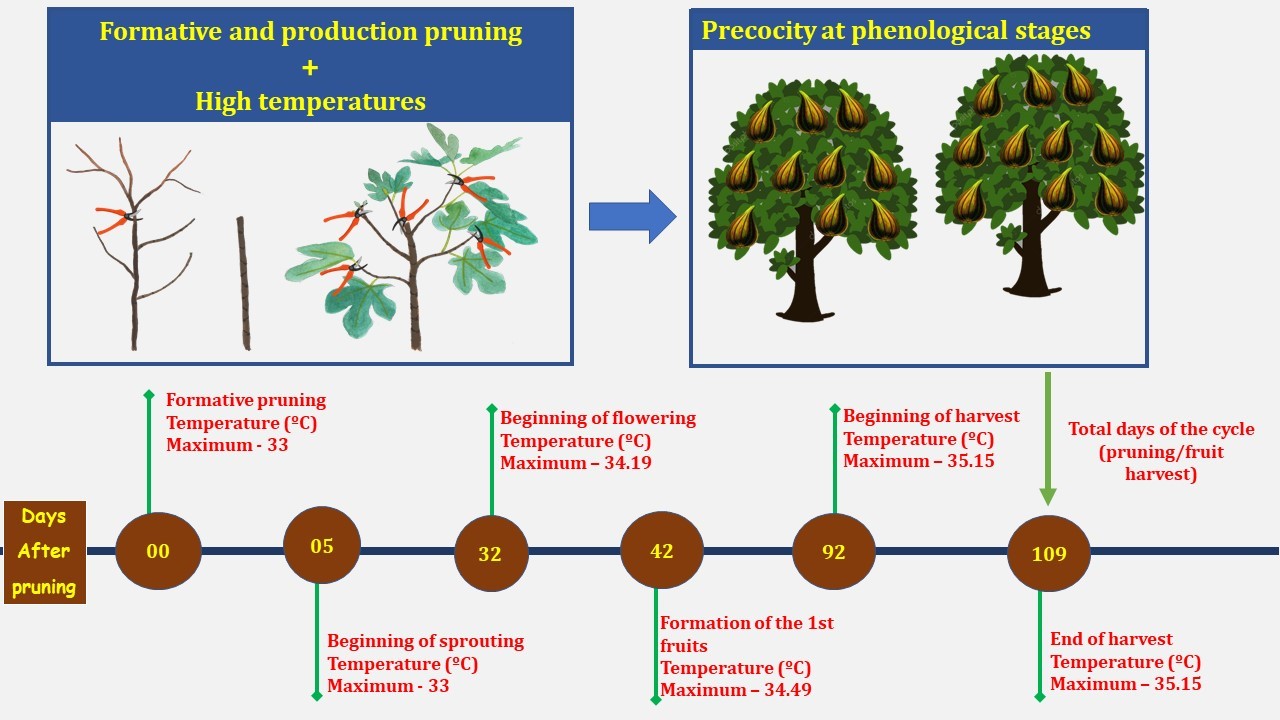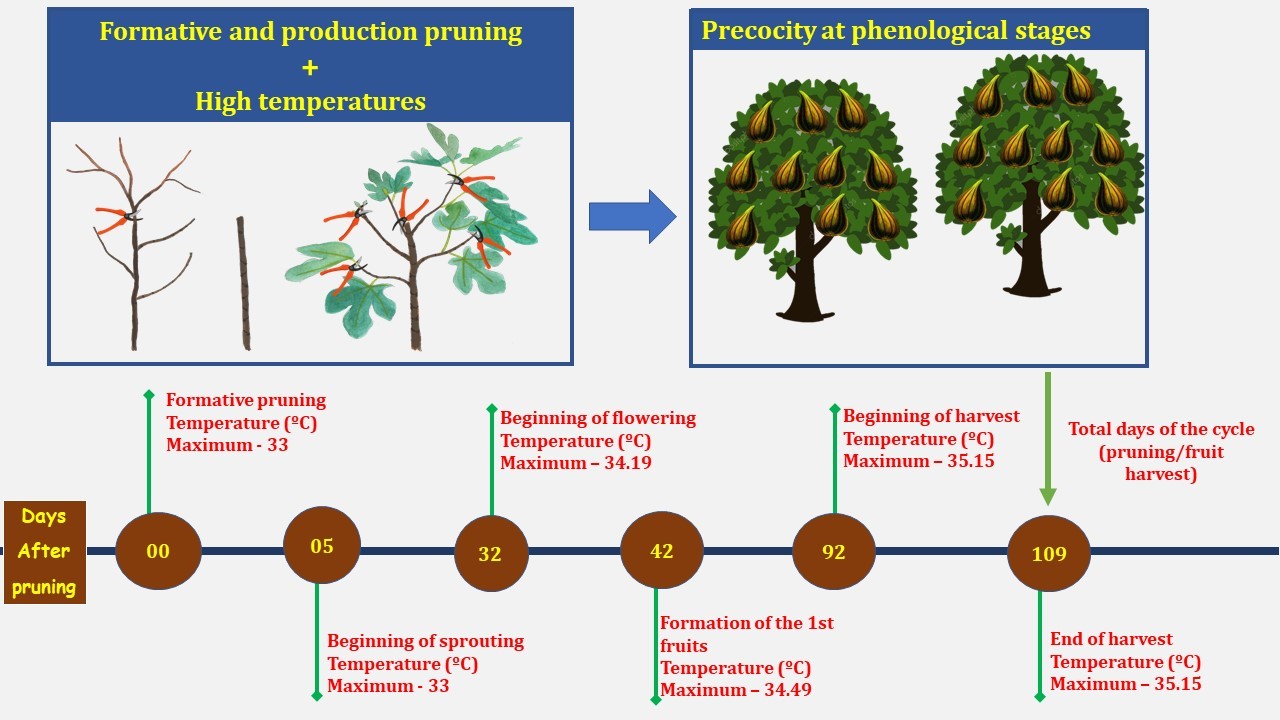Effects of formative and production pruning on fig growth, phenology, and production
DOI:
https://doi.org/10.48162/rev.39.061Keywords:
Ficus carica L, Formative pruning, Production pruning, Phenological stagesAbstract

Tree pruning influences the phenology of fruit species. The present study aimed to evaluate the growth and phenology of the fig cultivar ‘Roxo de Valinhos’ subjected to formative and production pruning in the semi-arid region of Piauí. A phenological analysis was performed after formative pruning in 27 fig plants based on the following periods: from formative pruning to the beginning of sprouting, at the beginning of harvest and at its end, and during harvest. Additionally, the variables of branch length, branch diameter, number of leaves, nodes, shoots, inflorescences, and secondary branches were also evaluated. The production pruning treatments (10, 20, and 30 cm) had nine replications each. The Generalized Linear Mixed Model used assumed as fixed factors the branch sizes at pruning (10, 20, and 30 cm), time after pruning (30, 60, 90, and 120 days), and the interaction between factors. The results revealed that figs were well adapted to the semi-arid region of Piauí and showed precocity at all phenological stages compared to those grown in temperate regions. With regard to production pruning, branch size as a function of time did not influence fig development.
Highlights:
- There was a reduction in the productive cycle of fig trees cultivated in semiarid regions.
- The pruning intensity did not influence the phenology of the plants.
- Pruning management should always be considered for a better adaptation of the fig tree in the semiarid region of Piauí.
Downloads

Downloads
Published
How to Cite
Issue
Section
License
Copyright (c) 2018 Revista de la Facultad de Ciencias Agrarias UNCuyo

This work is licensed under a Creative Commons Attribution-NonCommercial-ShareAlike 3.0 Unported License.
Aquellos autores/as que tengan publicaciones con esta revista, aceptan las Políticas Editoriales.










.jpg)




